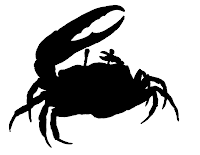Thanks to Mr. Rients and his Boot Hill campaign I've had a mini-obsession with westerns recently. I did some
cogitating about how to DM a western game before, but never came to any conclusions.
After recently re-watching a bunch of films I think I better understand the genre.
Westerns are about Law and how we as individuals fit within that framework. Often they are about communities on the frontier that are just outside the oncoming tide of Law (Tombstone, Deadwood). You can gamble there, carry weapons, and pay for sex. You can drink all night and shoot your revolver into the air.
Westerns are even more often about the individual seeking justice outside the Law. You might call this revenge, but "revenge" has connotations of patience and guile. Westerns are about dogged pursuit of the flown outlaw. I think a better word would be Reckoning, a biblical style of answering for crimes.
So, how does this help with DMing within the genre? Well, I think know this will help line up conflicts that feel right. But for certain types of campaign I think it might even be clearer.
The Bad
Parties playing rustlers, train robbers, or shootists will eventually face two options: fade into obscurity or violent conflict with the Law. I think a time limit will help foster this. Say you give you players 5-10 sessions to do what the will, and you crank up the tension each session. The Fuse.
Success will bring notoriety which will bring the inevitable Reckoning. More posses. Posses form quicker. Homesteads and townships are forewarned and armed.
The Ugly
The time limit can also work for the person looking to bring the Reckoning (think the Searchers, True Grit). It is "ugly" in the sense of being brutal and outside the civilizing Law. Give players the same 5-10 sessions to track down leads and enact personal justice. How much of a lead did the Comancheros get? Can you catch the gunslinger before he crosses the border into Mexico?
Generally there is one person on this mission, but it actually makes for good roleplaying with sidekicks that question the vendetta and will need to sacrifice themselves for the hero or be sacrificed by them.
The Good
This one is more complicated and might require more artistry on the part of the DM. With "good," I'm thinking of the westerns where there is a law abiding element, doing their best to accommodate those that chafe at the Law, and, eventually, things go to shit (think Tombstone).
Here the time limit isn't important so much as the tension the DM builds. The opposition will push the players and push them and push them, until that invisible line has been crossed and violence ensues.
The DM will have to do that pushing. In a D&D game this might feel like the DM is an adversary, but hopefully players will know that if they roll up a shopkeep character who lives in Tombstone, they won't just be running a trading simulation, bad things will force themselves into their lives, tough choices will need to be made.
Related Genres
I think that a Pirate game would be just like the Bad above, the Queen's navy is on your trail and evetually your crew will be dispersed or hanged. A more tangible monetary threshold might be more fun in that case though-- raise 20,000 doubloons and you "win."
American gangsters are so similar that they almost seem like modern westerns to me. Pretty Boy Floyd and Curly Bill Brocious serve the same function in relation to folklore and the Law, well except with perhaps a tad more hero worship in the grueling economy of the 30's. It seems to me you could put a 5-10 session limit on a Gangbusters campaign and have it work well.
One subset of the gangster genre is different though, this is the mob boss that falls from power. What eventually becomes the Scarface movie. Law wins even against those who have built up entire power structures outside of it. But this is more modern, the gangster never had long even if they were the only ones who didn't realize it. I realize now though, that the same pressure cooker approach for the "good" above might work with these. Small troubles snowball until the boss' empire slips through their hands all at once
And how about Cthulhu games, are they similar in that there is a Fuse, just that it leads, not to violent confrontation, but insanity? I've never played CoC so I can't say much about it.
In conclusion, if any of this has merit it goes a long way to explain why I've never heard of a long Western campaign- it's actually contrary to the genre. It explains why Westerns, Pirate games, and Gangster games will always dwell in the realm of the one-off. It also explains why D&D's long, ongoing progress building makes for the most popular genre, it takes more time and its goals rarely satisfied; we can have a shoot out in a night and feel like we scratched the genre itch, but if your fighter never got their own keep, your wizard never made their own spell, there will always be that unfulfilled goal.
















